Grant Banbury – 12 December, 2021
Simply titled 'The Studio', the installation is a response to a shared studio space where Doris Lusk and fellow King Edward Technical College students Mollie Lawn, Anne Hamblett (later McCahon), Max Walker and others worked in the late 1930s. The word ‘studio' carries the notion of a private, personal space, an almost sacred space for exploration and experimentation—not only where ideas are realized but where only the artists themselves can invite visitors.
In line with her earlier projects re-interpreting ‘art historical moments’, Julia Holderness’ current presentation shines light on a specific artists’ studio in Ōtepoti Dunedin during the late 1930s. Simply titled The Studio, the installation is a response to a shared studio space where Doris Lusk and fellow King Edward Technical College students Mollie Lawn, Anne Hamblett (later McCahon), Max Walker and others worked. The word ‘studio’ carries the notion of a private, personal space, an almost sacred space for exploration and experimentation—not only where ideas are realized but where only the artists themselves can invite visitors.
Focussing on the still-life genre, a common subject for women painters in the ‘30s, Holderness’ carefully researched project looks both back and to the future. Layered in reference and concept, mixing ‘real and fictional’, ‘artworks and ephemera’, as an experience The Studio takes time to unravel. Happy to embrace ambiguity, Holderness invents her own narratives with work by Florence Weir, an imaginary artist born fictitiously in Christchurch in 1899.
Lusk’s modernist Flower Study/Mixed Flowers (1940), very much in the canon, and Hamblett’s Poppies (c 1937), a luscious, expressive painting by an outstanding student with real promise, are two key historical paintings on show. These and other works by Lusk and Hamblett are included alongside almost unknown pieces by Lawn and Walker, neither of whom pursed art careers.
Inviting a range of contemporary artists to participate in The Studio, Holderness chose Kirstin Carlin, Richard Orjis, Julia Holden, Tatyanna Meharry (Lusk’s granddaughter), Erica van Zon and Emma Turner; some creating works specifically referencing paintings in the exhibition. Extended text labels—a mix of Holderness’ own observations, quotes by art historians and participating artists, as well as informal memories from the artists’ extended family members—enrich the experience. Words by Victoria Carr, Anne Hamblett’s daughter, for example, add authenticity and intimacy, and the pale-grey walls add a museum-like quality. Holderness’ attention to detail is evident in the use of italics when quoting Weir, subtly separating the real from the imaginary.
Clearly Holderness’ inspiration is based on a small group of black-and-white photographs of Lusk taken in the studio at the time of her 1940 solo exhibition. Closely observed these images tell us a great deal. In one (facsimiles of the photographs are on display) Lusk, bespectacled and fresh-faced, stands poised with hands clasped in front of her powerful painting, Anna Macleod (a little-known work of national significance). Stylishly suited, with smart floral corsage and black dress shoes, the seated figure looks out, balanced by a still life comprising of a cup and saucer, teapot, and vase with flowers. Although the photographs indicate the quality of Lusk’s output at the age of 24, and inform us of interior décor, fashion and attitude, they also hint at the artist’s quiet determination to pursue a professional art career.
For me, one of the touching moments was Holderness’ discovery that Lusk’s oil Mixed Flowers (1940) and Hamblett’s Spring Blossom (1939) depict the same vase. Hanging the paintings side-by-side for the first time highlights how studio objects get shared. And, by inviting Emma Turner to create a replica earthenware vase, and installing it resting on a fabric cloth (between the two paintings) the curator attempts to bring the paintings into three-dimensions. The object becomes a portrait of sorts. Patterns from Mixed Flowers and other works decorate the cushions scattered on a day bed, inspired by the divan visible in the early photographs.
Holderness’ interest in felting and weaving is threaded throughout the show. Meharry’s ceramic beads, Still Life Colour Study (after ‘Mixed Flowers’ by Doris Lusk) 2021, are a tribute to her grandmother who produced, taught and advocated pottery in Christchurch in the 40s. Holderness, as Florence Weir, offers us delicately coloured felted wool textiles, abstract and modernist in design. Julia Holden’s fictional image, Portrait of Florence Weir in her Studio (2021), much in the style of Rita Angus’s Portrait of Betty Curnow (1942), becomes storytelling as each object depicted adds to the narrative.
Although, back in the ‘30s, Dunedin’s King Edward Technical College didn’t offer qualifications, the College proved a valuable breeding ground for new talent. Tutors from England bought fresh ideas, promoting Cezanne and modernism. A new wave of picture making emerged—broader, fresher with an emphasis on the picture plane and colour relationships. For whatever reason several talented students have faded from sight. However, a core have become household names. These include Colin McCahon and Toss Woollaston, who acknowledge the strength and importance of Dunedin’s art scene at this time. Key players such as Anne Hamblett, Rodney Kennedy (who became an important art patron) and Doris Lusk emerged as significant contributors to 20th century New Zealand art.
Random vinyl wall-texts scattered through The Studio, such as: ‘We need to clear out our easels and get hanging our works for the exhibition. There will be a preview on the Friday‘ attempt to bring the artist’s studio to life.
It’s perhaps unsurprising to learn Julia Holderness has worked in a public gallery, as her attention to detail in the show indicates. With a desire to explore alternative curatorial pathways (willingly ambiguous at times) to engage viewers in different ways, Holderness’ strategy raises valuable questions as to how we ‘read’ women artists in our culture, and how we give past events relevance.
Grant Banbury
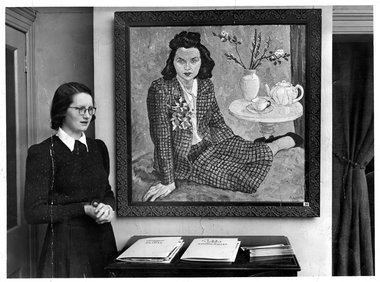
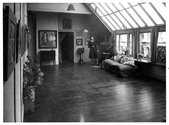
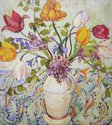

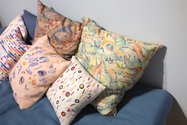
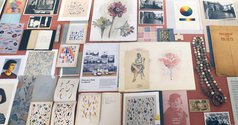



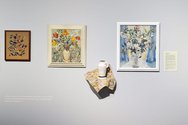
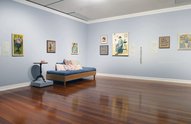


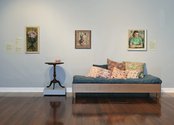
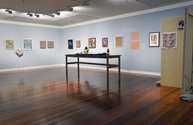
 Two Rooms presents a program of residencies and projects
Two Rooms presents a program of residencies and projects Advertising in this column
Advertising in this column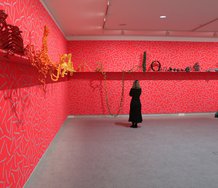
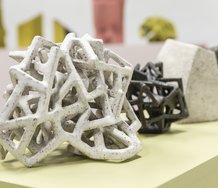
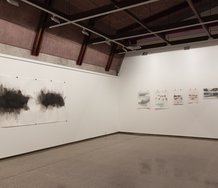
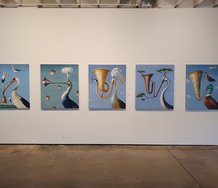
This Discussion has 0 comments.
Comment
Participate
Register to Participate.
Sign in
Sign in to an existing account.